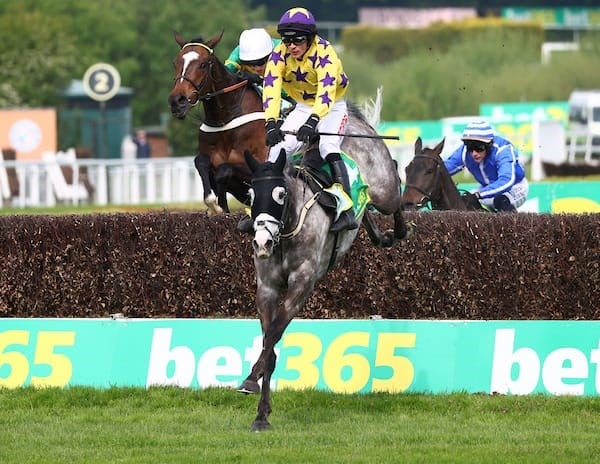Horse Chestnut, whom many consider the greatest thoroughbred racehorse to ever set foot on the South African turf, will lead the horses out for the Grade 1 L’Ormarins Queen’s Plate on January 8. It will be the first time he has returned to the scene of his finest hour, Kenilworth Racecourse, where he not only performed the rare feat of winning the J&B Met as a three-year-old, but passed the post eight lengths clear, writes David Thiselton.
It is fitting that he will be present for probably thee most intriguing race the course has seen since that heady day in January 1999, for this year’s Queen’s Plate sees another turf legend, Pocket Power, make an attempt at world history, but in his path will be the three-year-old filly, Ebony Flyer, who is causing as big a stir as Horse Chestnut caused when he was that age.
Horse Chestnut, a chestnut son of Fort Wood, was bred by Harry and Bridgett Oppenheimer’s Mauritzfontein Stud.
Mike De Kock, the current South African Champion trainer, selected him off the farm to join his Randjesfontein yard in 1997.
One of the details de Kock remembered was that, most unusually, he could fit almost two fists in the throat area between Horse Chestnut’s jowels, a test he always does to check the potential breathing capacity.
Horse Chestnut immediately made his mark, winning his debut in a Maiden Juvenile Plate over 1000m at Turffontein on December 20 1997 by a facile 5,75 lengths.
His only defeat came in his second start on March 10 1998, when finishing third in a Grade 3 race over 1000m at Newmarket.
However, he was not himself that day and it proved a temporary blip.
He won his final start as a juvenile in the Listed Natal Free Handicap over 1200m at Clairwood in comfortable fashion.
As a three-year-old he swept all before him and besides his J&B Met win he became the only horse to ever win the Triple Crown, which consisted of the Grade 1 Cape Guineas, the Grade 1 SA Classic and the Grade 1 SA Derby.
The Derby was his final appearance in South Africa and few will forget how he sauntered clear of the field without appearing to come out of an exercise-like gait, winning by just under ten lengths while jockey Weichong Marwing stood in his saddle and blew a kiss to the rapturous crowd.
De Kock then targeted the Dubai World Cup and sent him to America to prepare.
His first overseas start was in the Grade 3 Broward Handicap over 1700m on the dirt with Mike Smith aboard and, as the commentator said, Horse Chestnut proved himself “everything they said he was”, scooting clear to win by 5,5 lengths.
Tragically, he suffered a leg injury in training shortly thereafter and had to be retired.
His American caretaker trainer spoke of Horse Chestnut’s astonishing performances in training, whereby he appeared to be cantering but was recording phenomenal times, a description that would also have fitted his SA Derby win.
It is a factor that weighs heavily when trying to envisage what this great horse might have achieved.
After his retirement, having won nine out of ten starts, the Oppenheimers sold the majority of shares in Horse Chestnut to America’s most famous stud, Seth Hancock’s Claiborne Farm in Kentucky.
He sired 61% winners in four crops, among them 28 stakes horses, including Grade 1, 2 and 3 winners. His progeny has earned in excess of $10 million.
When it was announced in 2009 by Johan and Gaynor Rupert’s Drakenstein Stud, that they had secured the horse through Northfields Bloodstock, breeders felt it was like the return of the prodigal son.
Horse Chestnut settled into his beautiful new surrounds immediately and his happiness was epitomised by the rare friendship he struck up with his sire colleague, Trippi.
Stallions usually have to be separated by metal bars, but this pair muzzle each other when leaving their stables together and if one leaves alone the other will call for him.
Horse Chestnut was accorded 80 mares in his first season and got 72 of them in foal. He stands at a fee of R35,000.








